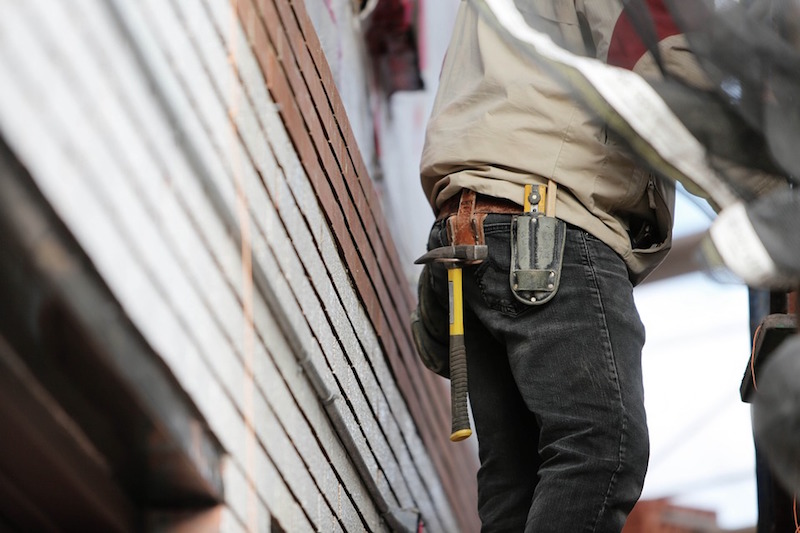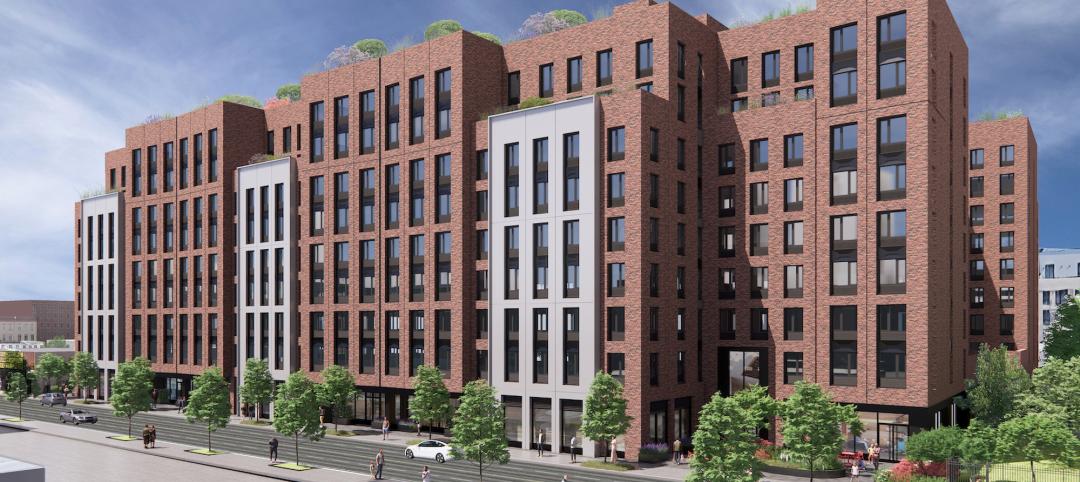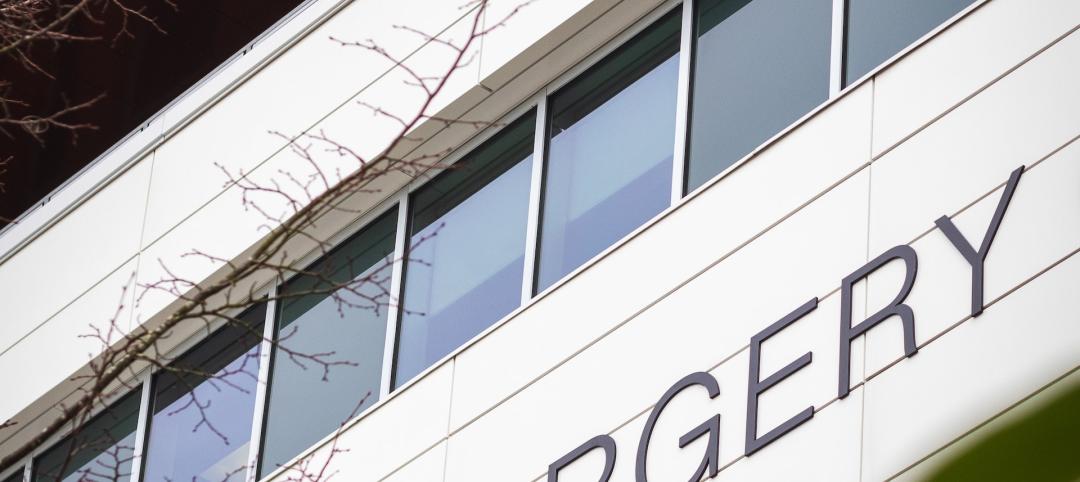Commercial construction is in high demand across the country and contractors remain optimistic about the current and forward-looking health of the sector, according to the Q3 USG Corporation + U.S. Chamber of Commerce Commercial Construction Index (‘Index’), released today. Nearly all contractors surveyed this summer (95%) expect revenues to grow or remain stable over the next 12 months compared to the prior 12 months, nearly the same percentage as in the Q2 2017 survey. Most contractors (93%) also expect to see profit margins stay the same or increase in the next 12 months, reflecting healthy contractor sentiment.
Despite contractors’ expectations for growth, access to talent continues to pose challenges in the third quarter of 2017, with 60% of contractors having difficulty finding skilled workers, compared to 61% in Q2. Nearly all contractors (91%) said they are at least moderately concerned about the skill level of the workforce, with 66% of contractors in the South expressing concerns about the availability of skilled labor. The Index release comes on the heels of Hurricanes Harvey and Irma, which are expected to exacerbate existing concerns about labor shortages in the South.
“The Commercial Construction Index is unique in providing the contractor’s view of the state of the industry, which is a key driver of the U.S. economy,” said Jennifer Scanlon, President and Chief Executive Officer of USG Corporation. “This quarter’s findings reveal strong optimism about future prospects for the industry, and also highlight a real need to address ongoing concerns about skilled labor shortages and the impact it has on building in the U.S.”
The Index looks at the results of three leading indicators to gauge confidence in the commercial construction industry – backlog levels, new business opportunities and revenue forecasts – generating a composite index on a scale of 0 to 100 that serves as an indicator of health for the contractor segment on a quarterly basis. The Q3 2017 composite index score was 73, down slightly from the second quarter’s 76, but close to the first quarter’s 74, representing a consistent sentiment of health in the sector.
The Q3 results from the three key drivers were:
- Backlog: On average, contractors currently hold 9.5 months of backlog, close to their average ideal amount of 12 months, indicating a steady market and healthy amount of booked work. This represents 77% of their ideal backlog levels.
- New Business: More than half of contractors (54%) reported high confidence in new business over the next 12 months (compared to 59% in Q2).
- Revenues: The majority of contractors (67%) continue to expect revenues to grow or remain stable in the next year, although expectations for the rate of expected growth inched toward more modest levels (compared to 71% in Q2).
“The commercial construction industry employs millions of Americans and the contributions the sector makes to the U.S. economy are vital to our country’s growth,” said Thomas J. Donohue, President and CEO of the U.S. Chamber. “However, finding skilled workers remains a challenge for this industry, and it’s likely to remain a challenge in the areas affected by the recent hurricanes. Finding skilled construction workers will be essential to ensure the Gulf region is able to quickly and efficiently rebuild. Our nation must address our workforce challenges to enable the economy to grow.”
This quarter, contractors surveyed were also asked about workforce skills development after revealing insights last quarter about the increasing difficulty in finding skilled workers. Respondents identified safety, technical proficiency, and communication as the most valued skills on the jobsite. Of note, there is a wide gap (40%) in the number of contractors who note the importance of communication skills and those who think their workers have strong skills in that area.
Just over half (53%) of contractors surveyed in Q3 said they plan to hire new workers, a decrease from 66% in Q2. This is accompanied by a 10% increase over last quarter in the number of contractors that plan to keep the same number of workers, indicating an anticipated shift from hiring staff to maintaining staff levels in the upcoming fall and winter months. Looking forward, only 39% of those surveyed in the third quarter predicted the situation will worsen, down from nearly a half (47%) in Q2, indicating that although there are shifts in the hiring environment, contractors believe it to be stabilizing. This situation bears monitoring in the coming months as parts of the Southern United States begin rebuilding from Hurricanes Harvey and Irma.
Related Stories
Hotel Facilities | Jan 22, 2024
U.S. hotel construction is booming, with a record-high 5,964 projects in the pipeline
The hotel construction pipeline hit record project counts at Q4, with the addition of 260 projects and 21,287 rooms over last quarter, according to Lodging Econometrics.
Modular Building | Jan 19, 2024
Virginia is first state to adopt ICC/MBI offsite construction standards
Virginia recently became the first state to adopt International Code Council/Modular Building Institute off-site construction standards.
Modular Building | Jan 19, 2024
Building with shipping containers not as eco-friendly as it seems
With millions of shipping containers lying empty at ports around the world, it may seem like repurposing them to construct buildings would be a clear environmental winner. The reality of building with shipping containers is complicated, though, and in many cases isn’t a net-positive for the environment, critics charge, according to a report by NPR's Chloe Veltman.
Sponsored | BD+C University Course | Jan 17, 2024
Waterproofing deep foundations for new construction
This continuing education course, by Walter P Moore's Amos Chan, P.E., BECxP, CxA+BE, covers design considerations for below-grade waterproofing for new construction, the types of below-grade systems available, and specific concerns associated with waterproofing deep foundations.
Sponsored | Performing Arts Centers | Jan 17, 2024
Performance-based facilities for performing arts boost the bottom line
A look at design trends for “budget-wise” performing arts facilities reveals ways in which well-planned and well-built facilities help performers and audiences get the most out of the arts. This continuing education course is worth 1.0 AIA learning unit.
Affordable Housing | Jan 16, 2024
Construction kicks off on $237.9 million affordable housing project in Brooklyn, N.Y.
Construction recently began on an affordable housing project to create 328 units for low-income and formerly homeless populations in Brooklyn, N.Y.
Giants 400 | Jan 15, 2024
Top 90 Hospital Facility Construction Firms for 2023
Turner Construction, Brasfield & Gorrie, JE Dunn Construction, McCarthy Holdings, and STO Building Group top BD+C's ranking of the nation's largest hospital facility general contractors and construction management (CM) firms for 2023, as reported in the 2023 Giants 400 Report.
Airports | Jan 15, 2024
How to keep airports functional during construction
Gensler's aviation experts share new ideas about how to make the airport construction process better moving forward.
Adaptive Reuse | Jan 12, 2024
Office-to-residential conversions put pressure on curbside management and parking
With many office and commercial buildings being converted to residential use, two important issues—curbside management and parking—are sometimes not given their due attention. Cities need to assess how vehicle storage, bike and bus lanes, and drop-off zones in front of buildings may need to change because of office-to-residential conversions.
MFPRO+ News | Jan 12, 2024
As demand rises for EV chargers at multifamily housing properties, options and incentives multiply
As electric vehicle sales continue to increase, more renters are looking for apartments that offer charging options.
















